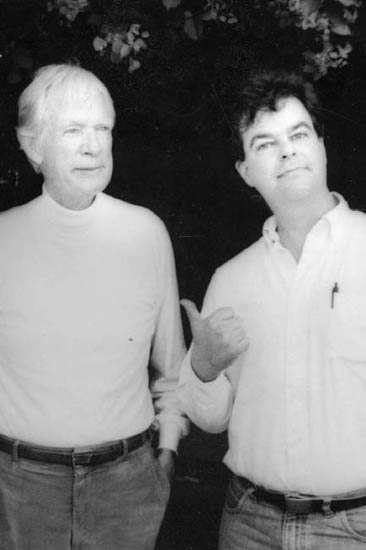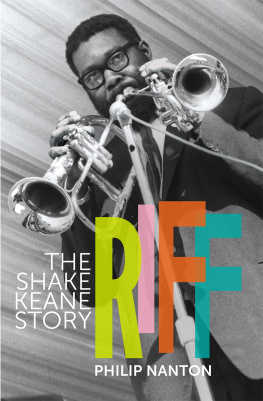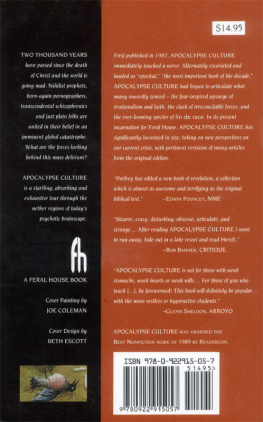




Citizen Keane 2014 by Adam Parfrey and Feral House
all rights reserved
Copyright to the images within are held by Corbis, the estate of Scott Lindgren, Paul Mavrides, Frank Kozik, and by Feral House. Use of the covers of books, slipcases, and magazines are considered to fall under the domain of Fair Use.
Design by Lissi Erwin/Splendid Corp.
feralhouse.com
10 9 8 7 6 5 4 3 2 1
ISBN: 978-1-9362-3996-2
ACKNOWLEDGMENTS
Adam Parfrey wishes to acknowledge the participation of both Walter and Margaret Keane, in addition the assistance of Judith Moore, Jim Holman, Mary Lang, Abe Opincar, Scott Lindgren, Christopher Cooper and Danna Voth for their company and help during the creation of the original San Diego Reader cover story. More recently, Elizabeth Perikli suggested this books subtitle, and Long Gone John Mermis spoke at length with me regarding his promotion and collection of Margarets work. Carrie Schaff, Frank Kozik, Philip Smith, and Paul Mavrides helped with the images seen within. Thanks are also due to Bess Lovejoy for her careful reading and suggestions. And a big tip of the hat to co-author Cletus Nelson for digging out many intriguing revelations.
Cletus Nelson wishes to thank the following individuals who lent a helping hand or a sympathetic ear when needed most: Dick Boyd, Ann Bradley, Sam Gaines, Annette Kesterson, Michael S. Moore, Ann Miller, Bob Miller, Tanya Verigin, and Janet Whitchurch.
TABLE OF CONTENTS


Walter Keane and Adam Parfrey. Photo by Scott Lindgren.
Adam Parfrey
Much of the material for this book came from a cover story I had written for the San Diego Reader, that citys weekly newspaper that published a good number of my feature articles in addition to a column called HelL.A. that called out my love/hate for my hometown, Los Angeles.
On a 1991 trip to San Diego to finish research for another articlein those dark pre-Google days, one discovered stories by actually talking to people and keeping ones eyes open in the physical worldI ran across an article in a regional throwaway about Walter Keane. Yes, Keane. Walter Keane. The supposed progenitor of garish Big Eye art was alive and living in La Jolla, where he was promoting a self-published memoir that presented himself as an artist on the level of Michelangelo, and stunningly a victim to court verdicts, fraudulent journalists, and a vindictive, sex-mad ex-wife.
Yes, here was a good story.
On the phone, 80-year-old Keane tried to make friends with me in dirty old man style. We hardly spoke for five minutes before he asked whether I had a girlfriend. Then he urged me to describe her looks, and then the frequency of our lovemaking. Before I was able to change the subject, he asked, She doesnt complain about sucking you off, does she? That can be a real problem if shes not willing and eager. I had the best, and can give you tips.
What an odd bird, I thought, as Walter and I made plans to get together for an interview, but first I made my way to a courthouse office building where I got dozens of pages of court documents Xeroxed. The originals are no longer available from court archives, but some of the juicier excerpts are repeated in this book.
At home I searched out a prized possession: a two-volume monograph of Keane art, one titled Walter Keane, the other Margaret Keane, both with cellophane overlays above the precious tipped-in color plates. Both volumes were also boxed into a slipcase, mimicking ostentatious high-end art books. What a strange production this was, as it included the musings of some stuffy elitist WASP with three names. My girlfriend, who was a talented artist herself, told me how much she liked Margarets paintings of depressed Modigliani-like young women. I had to agree despite societys dismissal of Keane art as being the worst sort of sentimental claptrap.
The more I met with Walter Keane, the stranger came the story. The manipulations were extravagant, and no former friend or ally would ever back up his claims. When I dug into all his various court cases against Margaret, Walter came forward with salacious and horrifying accusations about the sexual behavior of his ex-wife, a woman deeply committed to the Jehovahs Witness faith.
I felt a bit sleazy when I read Walters accusations about Margaret in a phone interview. Luckily for me, she reacted well enough to all this, and chuckled. Yes, thats the way he is, she remarked before we spoke at length about her trials and tribulations. A few weeks later I received from Margaret a couple of Jehovahs Witness books with pleasant inscriptions inside.
At the time I was writing this story, wild, figurative lowbrow art started to get a lot of attention, both in Los Angeles art galleries like La Luz de Jesus when it occupied the second floor of a building on Melrose Avenue, and the influential Helter Skelter exhibition at the L.A. Museum of Contemporary Art that featured, among others, the paintings of Robert Williams. Williams also became the father figure for a new magazine, Juxtapoz, that promoted this new figurative art universe, damning those who rebuked its imaginative creations as kitsch or illustration. Not that Robt Wms loved Big Eye art, but the idea of hanging kitsch seemed cool once again, and collectors came out of the woodwork to purchase inexpensive Big Eye art iterations to hang in hip coffeehouses, diners, hairdressing studios, and nightclubs. The creepier the kitsch factor, the better for the walls.
All of which begs the question: what is kitsch exactly? Is it the cheap mass-produced stuff one could have found in a Blue Chip stamp catalogue? Or is it the high-cost but intentionally lowbrow work of mutual funds broker turned artist Jeff Koons who sells massive balloon dogs for tens of millions of dollars? What makes one worthless and the other immensely valuable?
The remarkable Norwegian painter Odd Nerdrum wrote a book about the kitsch conundrum called, naturally, Kitsch: More Than Art. Nerdrums book wishes to resuscitate the word kitsch from the insult applied to artwork that offends the modernist or post-modernist sensibility. After hearing his beautiful oil paintings belittled with the K word, Nerdrum made it his life goal to elevate kitsch from being an insult to a badge of honor.
Next page













